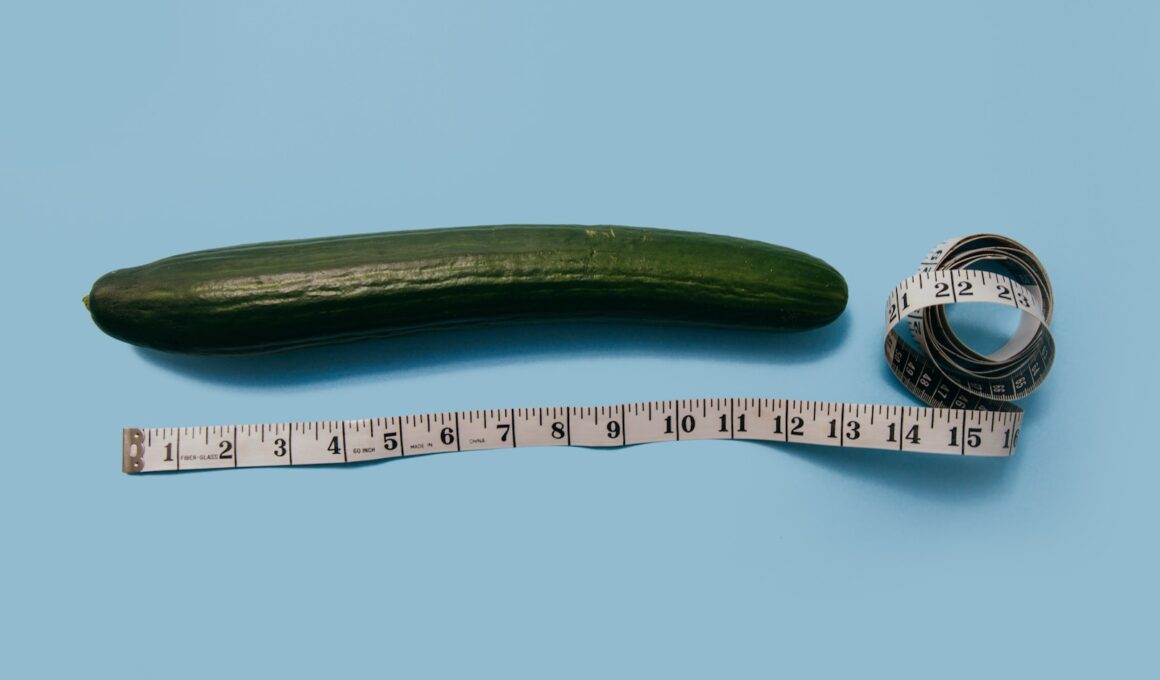Parents of teens may worry when their child’s penis doesn’t seem to be growing on schedule with other markers of puberty. They can use this guide to reassure their children that a small penis is perfectly normal.
Boys can start puberty as early as 9, and it ends around age 18. During puberty, they get taller, broader, their hair grows, wet dreams (nocturnal emissions) occur and their penis grow.
Measurement
The first step is to get accurate measurements. You need a flexible measuring tape, such as the kind tailors use, to wrap around the penis. You should choose the thickest part of the shaft and tighten the tape gently. Make sure the end of the tape is touching the bone above the pubic bone (symphysis pubis) and that it does not include the foreskin. If possible, do this while the penis is erect.
Some teenagers are so worried about their penis size that they go to a doctor with their concerns. The doctor can check the penis to see if it is developing on schedule, but that isn’t always enough information for an anxious teen.
For example, the doctor may find that the penis is shorter than average when it’s flaccid but a bit longer when it’s erect. This can give a false impression that the penis is growing on schedule, which only serves to reinforce the teenager’s feelings of inadequacy and insecurity.
If you are a parent, your role is to help your teen understand that the growth of their penis depends on many factors, and it’s not entirely under the control of their body. You can also talk to them about how their peers’ penis grow and what to expect during puberty. You can also encourage them to discuss their concerns with a trusted adult, such as a counselor or therapist.
Growth Pattern
The growth pattern of a 14 year olds penis changes with puberty. Most boys start pubertal growth at around age 9. Their penis grows most rapidly between the ages of 12 and 14. Some young men may notice that their friends have bigger or smaller penises than theirs, leading to feelings of insecurity or inadequacy. Parents should be careful not to reinforce these concerns by comparing their child’s growth with others or by stressing the importance of a man’s genital size for virility or masculinity.
During puberty, most boys start having regular nocturnal emissions (wet dreams) as well as ejaculation during the day. They might also experience a tingling sensation in their groin and testicles. Some boys may even develop breasts, called gynecomastia, although this is less common than in girls. They may also begin sweating more and develop body odor. They might have a voice that cracks or change pitch.
A study by Ponchietti et al looked at 3,300 males aged 17 to 19 years. They created nomograms based on penile length and circumference data. The study found a significant correlation between flaccid penile length and height, but not between stretched penile length and height. Stretched penile length was correlated with testicular volume, however. Thus, they suggest that stretched penile length might be an adequate way to monitor adolescent males’ genital development.
Symptoms
Many adolescent boys feel self-conscious about the size of their penis. Parents and other family members should refrain from reinforcing these fears. A man’s virility and masculinity are not solely determined by the size of his penis, but also by his character and other attributes. If a boy is concerned about his penis’s size, he should seek a counselor, parent, or doctor who will listen to him without making fun of him.
During puberty, most boys’ testicles and scrotum grow. The penis also grows, becoming longer and thicker. The foreskin may become more curly, and some young men develop pubic hair. Many boys also start to have wet dreams, and their voice may change.
By the end of puberty, a 14 year old’s penis is usually about the same size it will be in adulthood. A normal flaccid penis (non-erect) is about 3.6 inches, and a normal erect penis is between 5 and 7 inches.
However, the average penis can grow much larger or smaller than this. Whether or not a boy’s penis is growing at the expected rate depends on his puberty hormones. If a boy’s penis does not grow as he should, he should see a doctor or teenage health specialist. In some cases, Klinefelter syndrome or other genetic problems that affect testosterone production in the fetus can result in small penis and testicles.
Treatment
The penis’ growth usually accelerates with the start of puberty. The average flaccid (non-erect) penis length for boys at age 16 is 3.75 inches and a typical erect adult penis is about 5 inches in length. If a boy’s penis is shorter than that, it is considered micropenis and may require hormone treatment to grow.
A doctor can test a boy’s penis for genetic conditions that can cause it to be small, including Klinefelter’s syndrome and Turner’s syndrome. A doctor can also prescribe testosterone for a boy with a small penis if other treatment options are not successful. A boy’s penis can be surgically lengthened through a procedure called phalloplasty. This is more common in adolescents and adults than in children because it involves the use of general anesthesia. Surgery to correct a micropenis has some risks, including complications that can affect the urinary tract and genitalia.
Teenagers who are concerned about their penis should be encouraged to discuss their concerns with a trusted adult, such as a parent or counselor. However, they should not be ridiculed by their peers or made to feel self-conscious about their appearance. This only serves to undermine a teen’s confidence at a time when they should be developing a sense of independence and identity as a man. In addition, a teen’s penis size should not be seen as a measure of his masculinity or virility.









